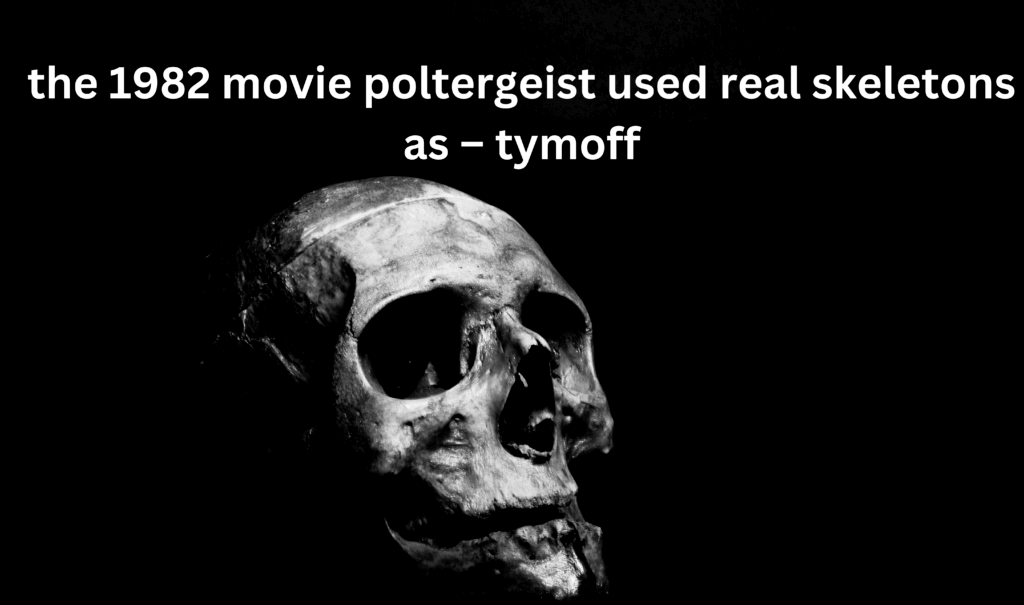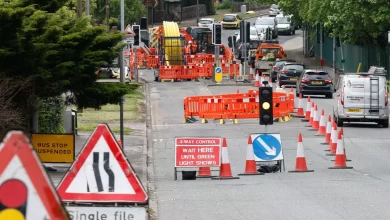The 1982 horror classic “Poltergeist,” directed by Tobe Hooper and produced by Steven Spielberg, remains one of the most iconic films in the genre. The story of a suburban family haunted by malevolent spirits captivated audiences with its gripping narrative and groundbreaking special effects. However, one of the most chilling aspects of the film extends beyond the screen – the use of real human skeletons in one of its most memorable scenes.
The Plot and Its Legacy
“Poltergeist” centers around the Freeling family, whose home becomes the epicenter of supernatural disturbances. As the spirits’ activities intensify, their young daughter, Carol Anne, is abducted into another dimension. The family’s desperate attempts to rescue her lead to a series of terrifying encounters with the paranormal. The film’s success spawned sequels, a television series, and a 2015 remake, cementing its status as a cornerstone of horror cinema.
The Infamous Pool Scene
One of the film’s most notorious scenes involves Diane Freeling, played by JoBeth Williams, being dragged into a muddy, water-filled hole that will soon be their swimming pool. As she struggles to escape, coffins and skeletons burst up from the ground around her. The sequence is intensely horrifying, with the realistic skeletons adding to the scene’s terrifying impact.
The Use of Real Skeletons
It was later revealed that the skeletons used in this scene were not props, but actual human remains. At the time, using real skeletons was a common practice in Hollywood due to their availability and cost-effectiveness compared to creating realistic plastic replicas. This decision, however, sparked significant controversy and has since become an infamous part of the film’s legacy.
Behind the Decision
The decision to use real skeletons was made for practical reasons. According to special effects artist Craig Reardon, acquiring real human skeletons from medical supply companies was cheaper than fabricating them from scratch. This choice was not unique to “Poltergeist”; real bones had been used in other films, but the revelation struck a chord with audiences and added a macabre layer to the film’s lore.
The Aftermath and Legacy
The use of real skeletons has been linked to the so-called “Poltergeist Curse,” a series of tragic events and untimely deaths associated with the cast and crew of the film. Dominique Dunne, who played the eldest Freeling daughter, was murdered in 1982, and Heather O’Rourke, who played Carol Anne, died in 1988 due to a medical misdiagnosis. These incidents fueled speculation and rumors about the film being cursed.
Ethical Considerations
Today, the use of real human remains in film would be considered highly unethical and unacceptable. Modern special effects technology allows for the creation of incredibly lifelike props without the need to resort to such methods. The revelation about “Poltergeist” serves as a reminder of how industry standards and ethical considerations have evolved over time.
Conclusion
“Poltergeist” remains a landmark in horror cinema, not only for its terrifying storyline and special effects but also for the chilling real-life decision to use human skeletons. This aspect of the film adds an eerie dimension to its history and continues to intrigue and disturb fans and film historians alike. As we reflect on this controversial choice, it highlights the importance of ethical standards in filmmaking and the impact of behind-the-scenes decisions on a movie’s legacy.
In the annals of horror film history, “Poltergeist” stands out not just for the terror it brought to the screen, but for the macabre reality that lingered long after the cameras stopped rolling.
FAQs All About the 1982 Movie “Poltergeist” and the Use of Real Skeletons – Tymoff
Q1: Did the 1982 movie “Poltergeist” really use real skeletons?
A1: Yes, it is true that the 1982 movie “Poltergeist” used real human skeletons in some of its scenes. This was a common practice in Hollywood at the time, as real skeletons were cheaper and more readily available than high-quality replicas.
Q2: Why did the filmmakers decide to use real skeletons?
A2: The decision to use real skeletons was made primarily for budgetary reasons. According to special effects artist Craig Reardon, obtaining real human skeletons from medical supply companies was less expensive than creating lifelike plastic replicas.
Also Read: Understanding 127.0.0.1:62893: The Localhost and Port Dynamics
Q3: Which scenes in “Poltergeist” featured real skeletons?
A3: The most notable scene featuring real skeletons is the one where Diane Freeling, played by JoBeth Williams, is dragged into a muddy pool under construction. During this scene, coffins and skeletons emerge from the ground, creating a particularly frightening visual.
Q4: Was it common to use real skeletons in films during that era?
A4: Yes, using real skeletons was not uncommon in Hollywood during that time. It was seen as a cost-effective method for creating realistic effects, although it would be considered highly unethical by today’s standards.
Q5: What impact did the use of real skeletons have on the film’s legacy?
A5: The revelation that real skeletons were used added a macabre layer to the film’s legacy and contributed to the urban legend of the “Poltergeist Curse.” This so-called curse is associated with a series of tragic events and deaths involving the cast and crew of the film.
Q6: What is the “Poltergeist Curse”?
A6: The “Poltergeist Curse” refers to a series of tragic incidents and untimely deaths involving people connected to the film. Notable examples include the murder of Dominique Dunne (who played the eldest Freeling daughter) in 1982 and the death of Heather O’Rourke (who played Carol Anne) in 1988 due to a medical misdiagnosis.
Q7: How has the film industry changed regarding the use of human remains?
A7: Modern filmmaking standards and ethical considerations have evolved significantly. Today, the use of real human remains in films would be deemed highly unethical and unacceptable. Advances in special effects technology now allow for the creation of realistic props without the need for actual human remains.
Q8: Is there any evidence to support the existence of the “Poltergeist Curse”?
A8: While several tragic events have been linked to the cast and crew of “Poltergeist,” there is no concrete evidence to support the existence of a curse. Many believe these incidents are coincidences rather than the result of supernatural forces.
Q9: How do fans and film historians view the use of real skeletons in “Poltergeist”?
A9: Fans and film historians are often fascinated and disturbed by the revelation that real skeletons were used. This aspect of the film adds an eerie dimension to its history and has become a significant part of its legacy.
Q10: Can I watch “Poltergeist” with the knowledge of real skeletons without it affecting my experience?
A10: This depends on the individual viewer. Some may find the knowledge of real skeletons being used adds to the film’s horror, while others might find it unsettling. Understanding the context and historical practices of the time can help provide perspective.



